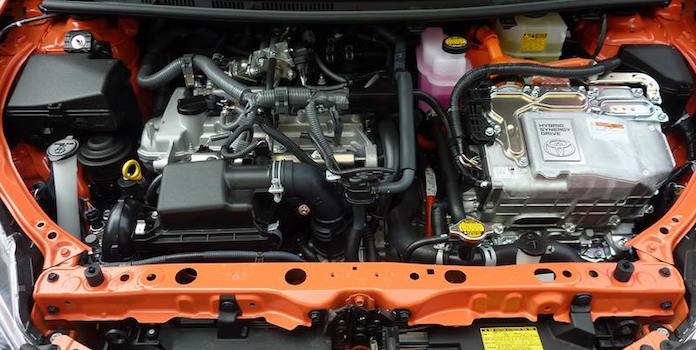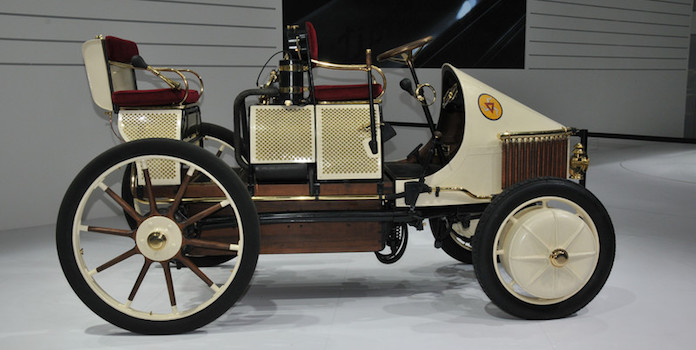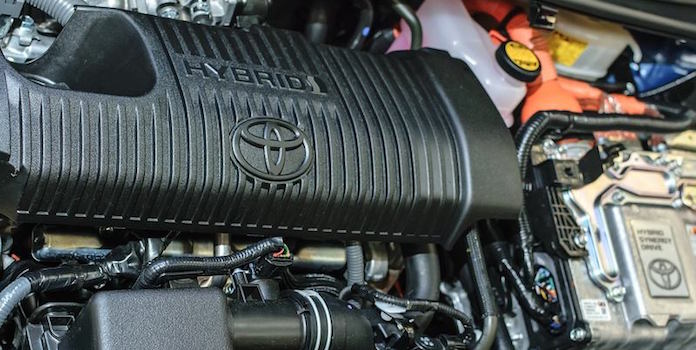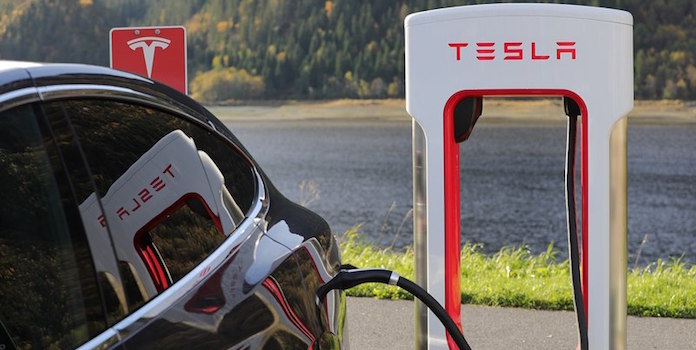What are Advantages and Disadvantages of a Hybrid Car?

Is a car that draws power from two sources the best of both worlds?
As state and federal laws tighten on carbon emissions and the greater public becomes increasingly focused on reducing pollution and decreasing energy dependence, hybrid cars have made a big splash in the US car market. Auto manufacturers have responded to the increased demand, and new models are being released each year. But to a prospective owner, what are the advantages and disadvantages of a hybrid car?
Is it all good news with hybrids, or are there downsides to these vehicles as well? What is the difference between a hybrid car and an electric car? I’ll cover all the major aspects of these vehicles with an objective lens, breaking down the advantages and disadvantages of hybrid cars.
Hybrid cars: the background
When you think of a hybrid car, which car pops into your mind? If something like a Toyota Prius or a Chevy Volt plug-in comes to mind, you’re right! What about one of those sleek looking Teslas? Although they are ‘green’ cars, they aren’t actually hybrids. Not all “green” vehicles are hybrids, and not even all hybrids are created equal.
A hybrid vehicle uses a mix of electricity stored in batteries and gas stored in a tank to propel a car forward. It is often powered by gasoline and uses a battery and motor to increase its efficiency. This is different from a purely electric vehicle (EV) like the Nissan Leaf or any Tesla model that runs completely on electricity stored in batteries.
How hybrid vehicles work
I’m not a mechanic, and I don’t think you’re here to learn specifics, so let’s not get too complicated with this explanation.
The idea behind the hybrid car came about in the late 1800s when cars were producing too much noise, too many foul odors, and too much pollution. The idea to add a battery-operated motor to a car with a conventional engine came from a Viennese carmaker named Jacob Lohner.
Interestingly enough, it was Ferdinand Porsche, the founder of what is now known as Porsche SE, who created the very first hybrid car, using a bank of batteries and gas-powered motor to drive the four wheels.
Hybrid cars take advantage of the benefits of both gas and electric options and minimize their respective limitations. Electric motors outperform standard motors in acceleration and are able to operate at top speed from a standstill. This is something gasoline motors aren’t very good at.
However, most batteries big enough to power an entire car are bulky, expensive and heavy (Tesla cars, conversely, are 100% electric and use lithium-ion batteries that are neither bulky nor heavy, though very expensive, hence their high price tags).
Additionally, fully electric-run vehicles have a limited mileage range before needing to be recharged. Most average between 100-200 miles depending on the size of the battery, while the priciest electric vehicles can surpass 300. A purely gasoline-run car can usually travel about 300-450 miles before needing to refill the tank.
The batteries in hybrid vehicles, however, are actually charged while the car is running via the gasoline-powered motor. Have you ever had a low car battery and your mechanic suggested driving around for a while to charge it? Same idea here.
What’s more, having one electric motor and one gas-powered engine in the same car (or two power chains, as they call it in car talk) allows car makers to implement smaller, more efficient gasoline-run engines as well as smaller electric batteries. However, two compact, high-tech devices in one car requires more money and makes the car heavier in general. More about these downsides later.
Varieties of hybrids
While I could go on all day about all the different types of hybrids in existence (micro hybrids, mild hybrids, muscle hybrids…what’s with all the funny names?), I’ll focus on the two types that are most well-known and make up the bulk of the hybrid car market: the full hybrid and the plug-in hybrid.
Full hybrids
Are you familiar with a Toyota Prius? Then you already know something about a full hybrid car!
These vehicles are best known for their high efficiency because they use their gas motors at high speeds when gas motors are most efficient. Then they switch to the battery motor during rush hour driving or stop-and-go traffic, as the electric motor produces zero exhaust and can accelerate quickly. This saves on gas and makes these cars great for getting around the city.
If you are hitting the highway, they are also a good choice for mileage. Let’s compare a 2010 Ford Fusion Full-Hybrid versus its normal non-hybrid counterpart from the same year. On the freeway, the hybrid gets 52 miles per gallon, while the standard version gets just 39. In the city, the difference is even bigger, with the full-hybrid going 61 miles per gallon, and the non-hybrid just 25. The perks are pretty clear from this comparison alone.
Full hybrids are fueled by gasoline only and don’t require any additional electrical charging (in other words, you don’t need to plug them in). Their batteries recapture energy when the car brakes and, as we learned earlier, while the gas-powered engine is running.
Plug-in hybrids
A plug-in hybrid electric vehicle, or PHEV, is one step closer to a fully electric vehicle. PHEVs have high capacity batteries that store enough electricity to cut down substantially on gasoline consumption. The batteries can be charged from an external power source, hence why we see cars plugged-in with charging cords just like those we use to plug-in our household appliances.
Because they’re getting fuel from an external source (the utility) instead of just the car itself (via gas engine and breaks), PHEVs have a much longer cruising range than full-hybrids and even 100% electric vehicles.
The battery plays the principal role in a PHEV while the engine comes in at times of need, when the battery power is low or when a large amount of drive power is required. This switching back and forth between engines occurs automatically, without any sort of driver intervention. What’s more, when the car is running on a conventional gas engine it’s simultaneously charging the batteries for the electric motor.
However, this method of charging is slower than plugging the vehicle directly into a power source (some PHEVs can charge is as little as a few hours when connected to a 240-volt power source). Most PHEV vehicles can be fully charged overnight, which is why having a 240v charger installed in your garage is a convenient way to power-up your PHEV.
Advantages of hybrid cars
We have already touched on some of the advantages of these vehicles in their descriptions above, but let’s get into the details. Listed below are clear-cut benefits of hybrids in general, noting any specific highlights for full hybrids or PHEVs.
1. They’re cleaner!
Let’s start with the most obvious perk: hybrid vehicles are a cleaner alternative to gasoline and diesel dependent cars (probably one of the reasons you are considering buying a hybrid car, or at least learning more about them).
Hybrids are the most gasoline efficient of all vehicles, meaning they use as little gas as possible. In this respect, they are already light years ahead of many gas-guzzling modes of transport out there. To quantify the difference, hybrid cars consume at least 25% less gas than their non-hybrid counterparts.
As I mentioned earlier, when a hybrid uses the electric motor, no CO2 emissions are created. This cuts back on total overall pollution. Here one car really does make a difference, and thousands of them together make an enormous impact on our environment.
In a study conducted by the Union of Concerned Scientists, a purely gasoline run car produces about 4.7 metric tons of CO2 each year. By comparison, a PHEV produces 2.9 metric tons. If we took this one step further, a fully electric car produces about 2.3 metric tons (stemming from pollutants generated while creating the electricity used to power the car, not while driving).
Here we can see that the biggest difference is made between a non-hybrid and a hybrid car, not between a hybrid and a fully electric car. Thus, hybrids are a great choice for someone wanting to make an important change to protect the environment.
2. Freedom from fluctuating gas prices
In the year 2012, when gas prices in the US peaked to an all-time high of average $3.68/gallon (compared to 2016’s $2.25/gallon), 81% of drivers surveyed in a poll from the Consumer’s Union said they would pay more for a fuel-efficient car if they could recover that money through lower fuel costs. In the same year, hybrid car sales increased 50% from 2011.
While it shouldn’t be surprising that people are more apt to buy a hybrid car during a spike in gas prices, it’s important to remember that this could easily happen again. Commodity prices are constantly changing, and those that drive gasoline-powered cars are out of options if/when gas prices increase again.
Having a hybrid will not only save you money at the gas pump (read below for details) but will give you the ability to better hedge against the fluctuations of variables like these, which are out of your control.
3. Fewer bills
There are actually several ways you can save money with hybrids.
- Gasoline
If you have ever wondered if a plug-in PHEV is actually cheaper to drive than a conventional car, given the higher electricity bill that will come with charging an extra large battery, then you’re asking the right kind of questions. The answer isn’t very obvious, but it’s one you will like.
When we say something is cheap, it’s because it’s cheap relative to its alternative. So it’s important to do the math when it comes to electricity prices versus gas prices. You know why hybrid and electric cars are so much more popular in Europe? Because gas prices in Europe are so high!
US gas prices are generally a lot lower than in other parts of the world. Yet, the cost of fueling a car with electricity is about half as much! The countrywide average is, as of this writing, $2.66 for one gallon of gas, compared to $1.20 an electric gallon to power a similar sized vehicle. That’s pretty impressive! The Department of Energy has a website comparing the costs of driving with gas versus electricity in each state. Check out your state’s average here.
Quick example just to drive the point home: When we compare a 2017 Honda Accord hybrid to a Honda Accord non-hybrid model, the first gets 48 miles per gallon while the second gets just 30. If we drove 20,000 miles each year and paid $2.50 per gallon for gas, we’d save over $600 per year with the hybrid. Not too bad, huh?
- Maintenance
Aside from being less gasoline dependent, traditional maintenance fees that come along with visits to the auto shop are usually lower with hybrid vehicles. Why? Because with many hybrid vehicles, each time the car idles or drives at a slow speed the electric motor takes over, reducing the overall use of the gasoline engine.
The same is also true for the car’s brake pads and brakes, which tend to last much longer in a hybrid due to its cooler engine temperature and its regenerative braking system. Required oil changes are also less frequent with hybrid cars, especially on smaller vehicles.
- Insurance
Driving a cleaner car may give you a small break on your insurance as well. A handful of large auto insurance companies including Framers, Allstate, Travelers and Liberty Mutual offer 10% discounts to hybrid car owners in several states.
Additionally, research conducted by the Insurance Institute for Highway Safety found that hybrid car drivers had a 25% less chance of getting hurt in an accident than those traveling in non-hybrid models. All these variables could add up to a lower insurance rate for many hybrid car drivers (excluding individual driving histories).
4. Convenience
With both PHEVs and full hybrids, there is no serious worry over getting stuck in the middle of nowhere with a dead battery, since both cars can rely on their gas motors to get them to their destinations (simply not an option with fully electrical vehicles). Conversely, being low on gas, especially in a PHEV, isn’t quite as dire when you can utilize your electric battery.
Non-hybrid car owners would be forced to walk to the nearest gas station to bring back some gas, while pure electric vehicles with a dead battery would need to be towed. So the perks of enjoying two motors definitely serve as an advantage in tight spots when resources are low.
Note: this is all true assuming your car is already on. The electric motor in a PHEV is used to turn on the vehicle, thus, if you are out of both gas and battery power, you’re out of luck. So keep a decent supply of at least one at all times!
5. Federal and state incentives
As if all the advantages above weren’t enough, the US government also supports the movement and wants to help you cover the cost of a vehicle! (I’ll get into why hybrid cars are generally more expensive than their dirtier counterparts below).
The downside is that this only applies to PHEV vehicles, not full hybrid cars (or any other hybrid type, for that matter). From 2005 to 2010, there were federal income tax credits for most gas-electric hybrid cars, but as the market grew and could begin to stand on its own feet, these credits expired and were not renewed.
However, if the even cleaner plug-in hybrid is something you are considering, you can take advantage of federal and possibly state tax credits. Plug-in hybrid cars, as well as all-electric cars purchased after 2010, are eligible for a federal income tax credit of up to $7,500, depending on the size of the car and its battery capacity.
The credit is available to the first 200,000 qualifying vehicles sold by each manufacturer within the US. So far, no company has reached this target. Additionally, nearly 30% of all states offer state-level incentives on top of the federal offerings.
Check out Plug In America to find state specific incentives for the purchase of hybrid vehicles. Some incentives are not even monetary, but instead offer perks to hybrid car drivers like access to the carpool lane. This is especially useful in states like California, which has some of the country’s worst traffic, but also has one of the US’s largest hybrid car driving populations!
Disadvantages of hybrid cars
Cleaner vehicles are wonderful, but they are not always consequence-free, nor are they automatically the better choice in all circumstances. Let’s take a closer look at some of the downsides of hybrid cars.
1. High price tag
Hybrids cost more and there are a few reasons why.
While growing in popularity, hybrids aren’t made on a large scale like their conventional counterparts. As manufacturing capacity increases, economy of scale makes parts cheaper, as they are mass-produced. Hybrids haven’t hit that tipping point into ‘mass production’ yet. As the hybrid market increases, we’ll see prices closer to that of cars run on gasoline. It’s already starting to happen — in fact, some would say we have nearly arrived at parity.
And, in fact, this is the case for a few hybrid vs. traditional car models. The Department of Energy has a great website that allows you to do a side-by-side comparison of a hybrid car with its closest non-hybrid equivalent. You’re able to see how much you would save in gas money over the span of a week, a month, and a year with the hybrid car. It also provides an estimate of how many years it would take you to pay back the difference in cost.
Go test out the site yourself, but here’s a quick highlight: Three hybrid cars (Lincoln MKZ, Buick LaCross and Regal) cost exactly the same as their gasoline-run counterparts but offer much higher combined MPG, saving you hundreds without changing anything else. Other models, of course, are not as ideal and take as long as 9.2 years to pay off (like the Hyundai Sonata SE) and there are a host of other cars that fall somewhere in the middle.
All in all, most hybrids require more up front cash compared to their conventional counterparts. The biggest questions to ask yourself before buying a hybrid are: How long do you plan to use this car, and how much driving do you do?
Luckily, you can easily use the site above and a bit of simple math to get a rough estimate of your hybrid car’s worthiness. In the end, you may find that your dream hybrid is actually an intelligent investment.
2. Battery issues
Thanks to federal laws, hybrids and PHEV batteries have a warranty of 8 years or 100,000 miles. In 20% of states, that warranty is extended to 10 years or 150,000 miles. If you plan to use your hybrid for longer than that, the risk of needing to replace the battery goes up — and the price is not pretty.
In the early years, replacing a hybrid battery was incredibly expensive, but the costs for a full-hybrid battery replacement have come down significantly. It will depend on your make and model, but estimates run between $2,000-$3,000.
3. Resale value affected by battery age
While hybrids are quite popular, which would theoretically make them easy to sell, the one drawback that creates uncertainty in potential buyers is the life of the battery. Known to decrease the resale value, this factor leaves a bit too much risk on the table for some.
4. Road tripping: hard to travel longer distances
Most PHEVs can be charged overnight using a standard US 120-volt household circuit. They also don’t need to be charged every single night, unless you are driving a good amount each day and wearing the battery out. However, what if you wanted to go on a road trip and leave your charging station behind?
Home charging units need to be built into a home and are not portable. Thus, as a PHEV owner, you are at the mercy of charging stations. This disadvantage doesn’t need much explanation, as it’s obviously a drawback of convenience.
Luckily, the U.S. Department of Energy has a useful site for locating the 60,000 electric and charging stations throughout the US. You can even plan a route around these charging stations. I tried a trip from Seattle to New York that produced a route with 755 charging stations along the way!
Additionally, charging on a 120-volt outlet takes several hours, which is no problem when you can park your car at home and charge it overnight. But it gets more complicated when you’re on the road for days at a time. For those of you who road trip or travel a lot for work, you might want to take a closer look at how many charging stations are in your area and traveling zone.
And just to be clear: this is obviously only a problem for plug-in hybrids, full hybrids don’t require additional charging.
5. Cold weather affects efficiency
During winter driving conditions, fuel economy decreases. In fact, in a conventional gas-powered car, the average gas mileage dips down about 12% at 20°F compared to 77°F. On short trips of 3 or 4 miles, the inefficiency can nearly double!
What you probably didn’t know is that this phenomenon is even more severe with hybrid cars, whose fuel economy plummets around 31-34% in winter weather. Hybrid battery performance takes a big hit in colder temperatures. This makes it even harder for the gas motor to keep the battery charged, which also negatively affects the regenerative braking system.
In general, if you live in a very cold area or somewhere with wicked winters, you may want to do some further research on whether a hybrid is a good choice for you.
So should you take the plunge, seeing the advantages and disadvantages of hybrid cars?

This article hopefully answered some of the major questions you had about hybrid cars, what they are, how they work, and why the idea of buying one should interest you. While they are not a one-size-fits-all solution, hybrid vehicles can really pay off in the long run, both for drivers and for the environment.
That being said, they do have their drawbacks. But as the mitigation of pollution remains a top priority for both governments and the public at large, the market for hybrids will continue to grow and flourish.
In fact, the takeover of hybrids and electric vehicles may not be so far away. More than 40% of US households are already equipped with the basic requirements for using a PHEV in their homes. What’s more, 65% of Americans believe that electric powered vehicles are “an essential part of our nation’s transportation future for reducing oil use and global warming pollution.”
One thing is for sure, whether you jump on the hybrid train or not, the fleet of green vehicles driving alongside you will be around for years to come.
Image Credits under CC License via Pixabay – 1, 3, 4, 5, 6, Flickr – 2, Courtesy of Tesla.com – 7





